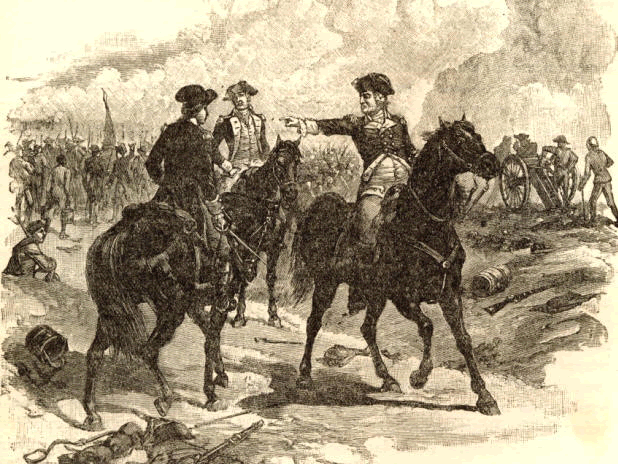This is a description of what happened before, after, and during, the Battle of Monmouth Courthouse.
 |
Perfect Opportunity
Following the winter and spring at their encampment at Valley Forge, the Continental Army was trained and refreshed. Commander-in-Chief of Continental forces, George Washington, had learned that British forces had planned to evacuate Philadelphia and return to New York in fear of a naval blockade. The 100 mile march from Philadelphia to New York would occur largely through the state of New Jersey. Washington saw the evacuation as a perfect opportunity to strike at the British.
A Deadly Battle on a Blistering Day
On the blistering afternoon of June 28, 1778, Washington ordered a detachment of 5,000 men to strike at the British rear guard as they departed Monmouth Courthouse, New Jersey on their way to New York. The strike was initiated to delay the British until the main American force could engage them. Patriot General Charles Lee was in charge of the initial attack, which failed miserably and resulted in a disorganized retreat. An enraged General Washington reportedly reprimanded Lee before taking command of the retreating soldiers. Placing himself in the line of fire among the retreating Continentals, Washington rallied the soldiers who regrouped and held the British in check until the main American force could arrive. The battle raged throughout the entire day with neither side gaining a decisive advantage. Only the arrival of dusk silenced the muskets and cannon. Although Washington wanted to resume the battle in the darkness, British forces had withdrawn from the area to continue their march to New York City.
 |
The Legend of Molly Pitcher was born at Monmouth Courthouse |
An Encouraging Draw
Patriot forces suffered approximately 500 casualties in the battle while British forces suffered as many as 1,000. Dozens, if not, hundreds of soldiers died of heat stroke rather than from combat. The battle is historically seen as a tactical draw, although the Patriots did not stop the British march to New York. The Patriots, did however, prove they could successfully battle the British in open combat. Monmouth was the last major battle waged in the Northern Theater. British forces would soon turn their attention on the Loyalist-friendly Southern colonies.
|
|
|
Advertisement

Remove ad